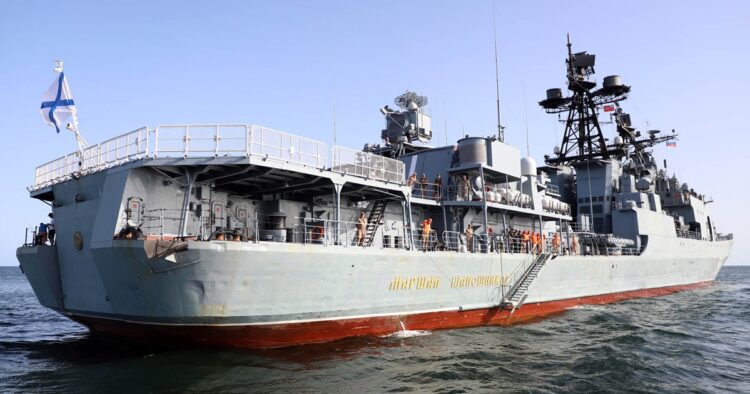In recent days, warships from China, Russia, and Iran have engaged in live-fire exercises in a crucial Middle Eastern waterway. More than 20 ships from these nations participated in the drills near the Gulf of Oman, aimed at enhancing maritime cooperation and safeguarding regional peace and stability, as per statements from their respective defense ministries.
This marks the sixth iteration of such joint exercises since 2018, according to reports from Russian state news agency. However, the timing of these drills coincides with heightened tensions in the region, noted by Iran’s official Islamic Republic News Agency, particularly amidst the ongoing Israel-Hamas conflict in Gaza.
Iran, a key supporter of Hamas and Houthi rebels in Yemen, has deployed a variety of vessels for the exercises, including frigates and fast-attack boats. China contributed a guided-missile destroyer and frigate, while Russia dispatched the cruiser Varyag from its Pacific Fleet.
The exercises cover approximately 17,000 square kilometers of sea, encompassing strategic straits crucial for global energy and trade traffic. Iranian Rear Admiral Amrollah Nozari emphasized the significance of this area in the northern Indian Ocean region, highlighting its role as a vital hub for international commerce.
It’s noteworthy that Iran’s navy has introduced new vessels equipped for extended ocean missions, armed with advanced domestically developed weaponry. While specifics regarding these weapons remain undisclosed, the participation of such advanced equipment underscores the seriousness of these joint maneuvers.
The timing of these exercises is significant against the backdrop of escalating tensions, with the Israel-Hamas conflict spilling into international waters, particularly the Red Sea and Gulf of Aden. Iranian-backed Houthi rebels have targeted military and commercial vessels in these areas, exacerbating regional instability.
Furthermore, the deepening ties between China and Russia, especially following Russia’s invasion of Ukraine in 2022, have raised concerns in the West. China’s participation in joint exercises with Russia, a nation facing international condemnation for its actions in Ukraine, has drawn scrutiny over Beijing’s strategic alliances and its potential role in supporting Moscow economically.
While the stated objective of the joint naval exercises remains enhancing maritime cooperation and regional stability, the geopolitical implications of such maneuvers cannot be overlooked. As tensions persist in the Middle East and beyond, the international community closely monitors developments in this volatile region.

















Comments